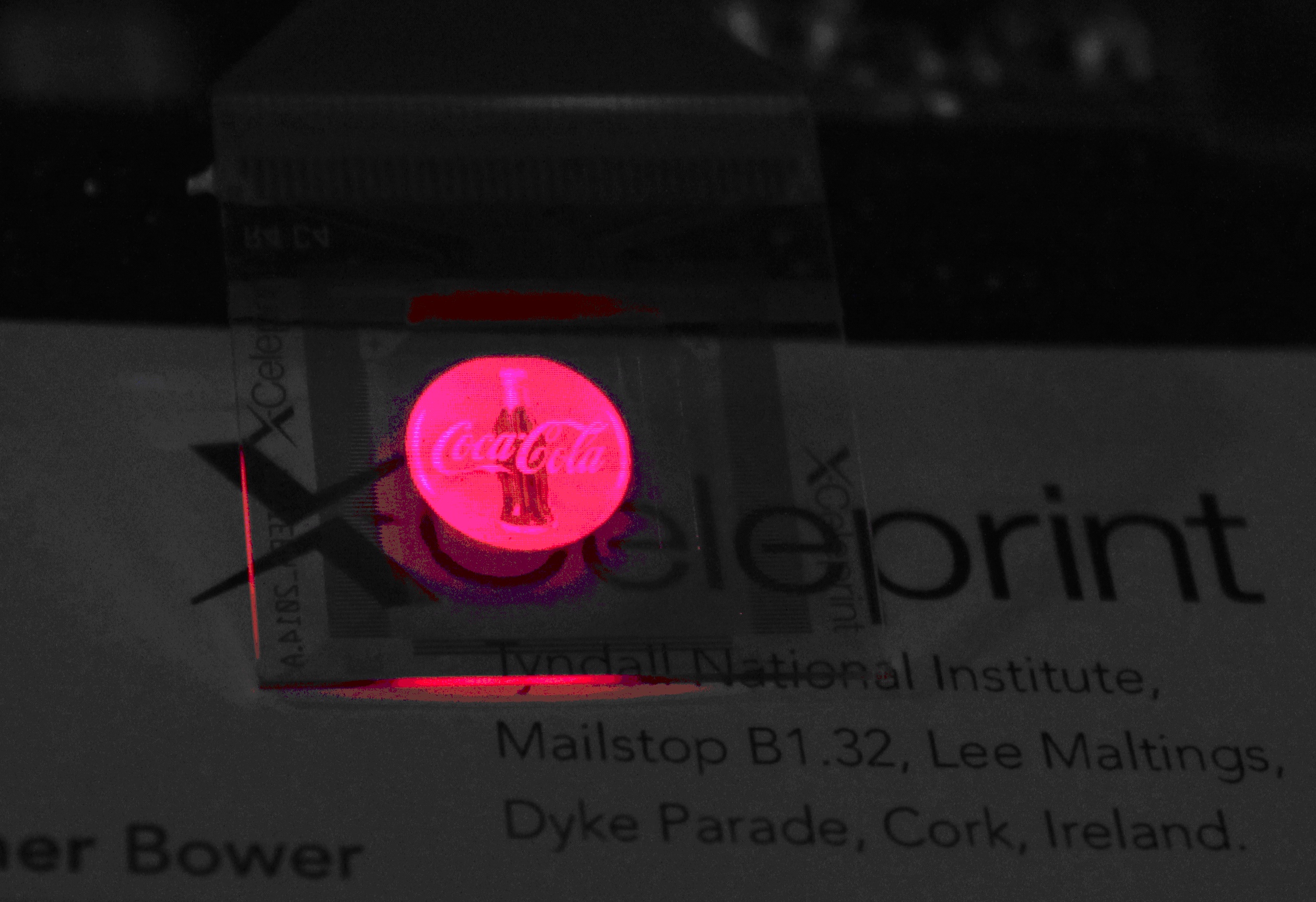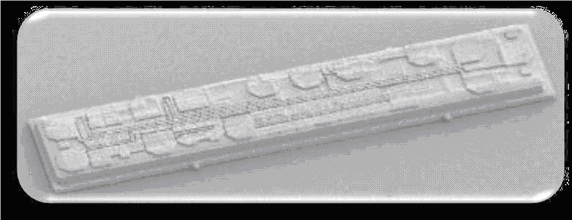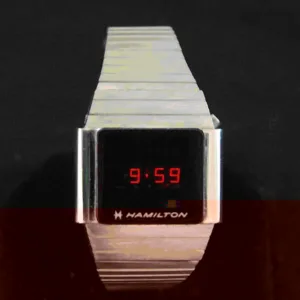This is the year when we go back to the future, at least according to the movie. But it may be true in another sense.

Back in the 1970s, digital calculators and watches used small inorganic Light Emitting Diodes as low resolution pixels to form numbers and even letters on the display. They were red and usually had a red filter overlaying them to increase the contrast. The pixels were defined by individually transferred bare LED die from their scribed and broken wafers, then wired to their driving circuits using individually placed wirebonds. Even automated, these processes were expensive and limited the resolution of the display. For this, and other reasons, these displays were soon replaced by LCDs. But LEDs for wearable devices are due for a comeback.
 Source: X-Celeprint
Source: X-Celeprint
The market for wearable displays is expected to grow from nearly non-existent today to $23B by 2023 according to IHS. High functionality wearable device markets require a very thin, low power, full color, high contrast display that can be operating, displaying information, 24/7. LCD displays with LED backlights are too thick. OLED devices, especially those on flexible polymer substrates, are thin enough, but suffer from lifetime problems. Neither is as power efficient as would be desired.
The solution is to develop and enable a new class of display that uses micro inorganic light emitting diodes (?LEDs) that will be more energy efficient, longer lifetime, and thinner than incumbent display technologies. These won’t be limited to monochrome red, but be full color, sporting a color gamut wider than LCD and rivaling OLED. Given that the number of color primaries is only limited by the number of source wafers, these displays may be multiprimary for greater energy efficiency and wider color gamut. They will be very high resolution, certainly greater than 600ppi. Just as with LCD and OLED displays today, they will be subpixel rendered for better performance and lower manufacturing cost.
To manufacture these displays, the ?LEDs, far smaller and thinner than conventional LEDs, will be mass transferred by the thousands, by the tens of thousands, from their source wafers to the display substrate precisely by automated MicroTransfer Printing (?TP) tools. One can think of these ?LEDs as being akin to colored ink to be printed as tiny colored dots onto the displays. They will then be electrically wired into the driving circuits using photolithographically defined metallization.
Light Emitting Diodes are currently being used to make billboard sized displays. But that technology uses packaged RGB LED triplets. The pixel pitch is 2mm and higher. These displays typically have noticeable artifacts caused by non-uniform color and brightness of each of the red, green, and blue LEDs. The better displays have been color matched by testing the LEDs and matching them in bins of similar color and brightness.
As it will not be practical to test and bin ?LEDs before assembly, new means for digitally controlling the local color and brightness of the ?LEDs on an individual and local color group level will be developed. Although the yields on the ?LEDs and the ?TP process are very high, with millions of ?LEDs per display, a few will be missing or inoperative. The same digital image processing that corrects for color and brightness variance will also be used to ‘perceptually mask’ the subpixel defects.
In the future, circuit designs for single crystal silicon ?IC drivers to replace ThinFilm Transistors (TFTs) will be developed. The ?IC drivers will be mass micro transfer printed across glass or polymer substrates in the active area of the display. In later designs of the ?ICs and display controllers, they will provide “smart” functionality for increased value added displays, including, but not limited to touch, gesture, pen, and near light field sensing, etc.
 Source: X-Celeprint
Source: X-Celeprint
The use of ?TP and ?ICs to replace TFTs will be a disruptive force in the display supply chain in that it will dramatically reduce the cost and complexity of display manufacture, especially reducing the capital investment required to build a new display factory, while simultaneously improving the performance, potentially opening new markets for displays.
The primary player in this new display technology is Apple, Inc. with their recent acquisition of LuxVue, which has been developing ?TP technology and compatible ?LEDs. Given Apple’s position in smartphones and its recent entry into wearables, their competitors and their suppliers have shown great interest in X-celeprint’s ?TP technology as a competitive response. GLO, which is primarily an LED start-up is a potential supplier of ?LEDs. Thus, Apple’s investment in this field should be viewed as both an endorsement of the technology and the emerging display market segment and as a motivating force for adoption of ?TP and ?LED displays by their competitors.
So we are now on our way Back to the Future of LED based wearable displays. – Candice Brown Elliott

